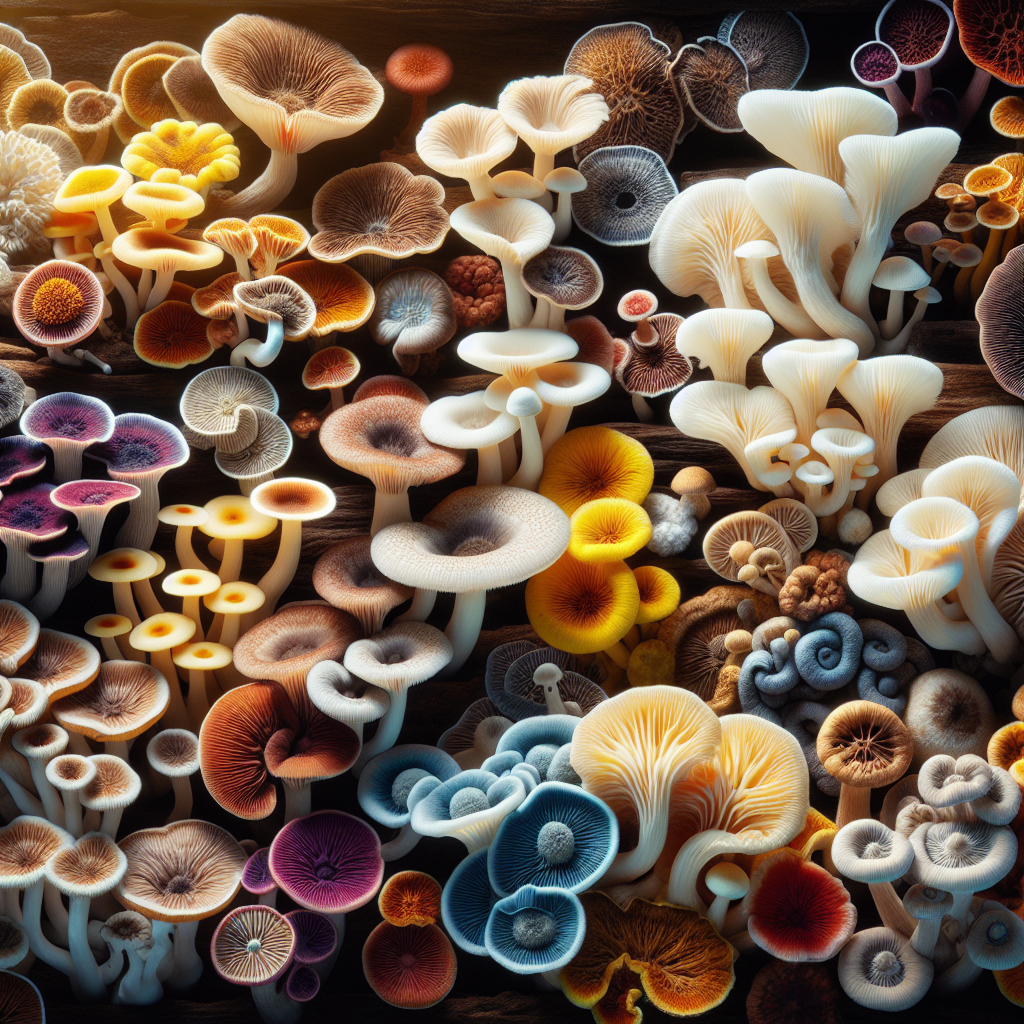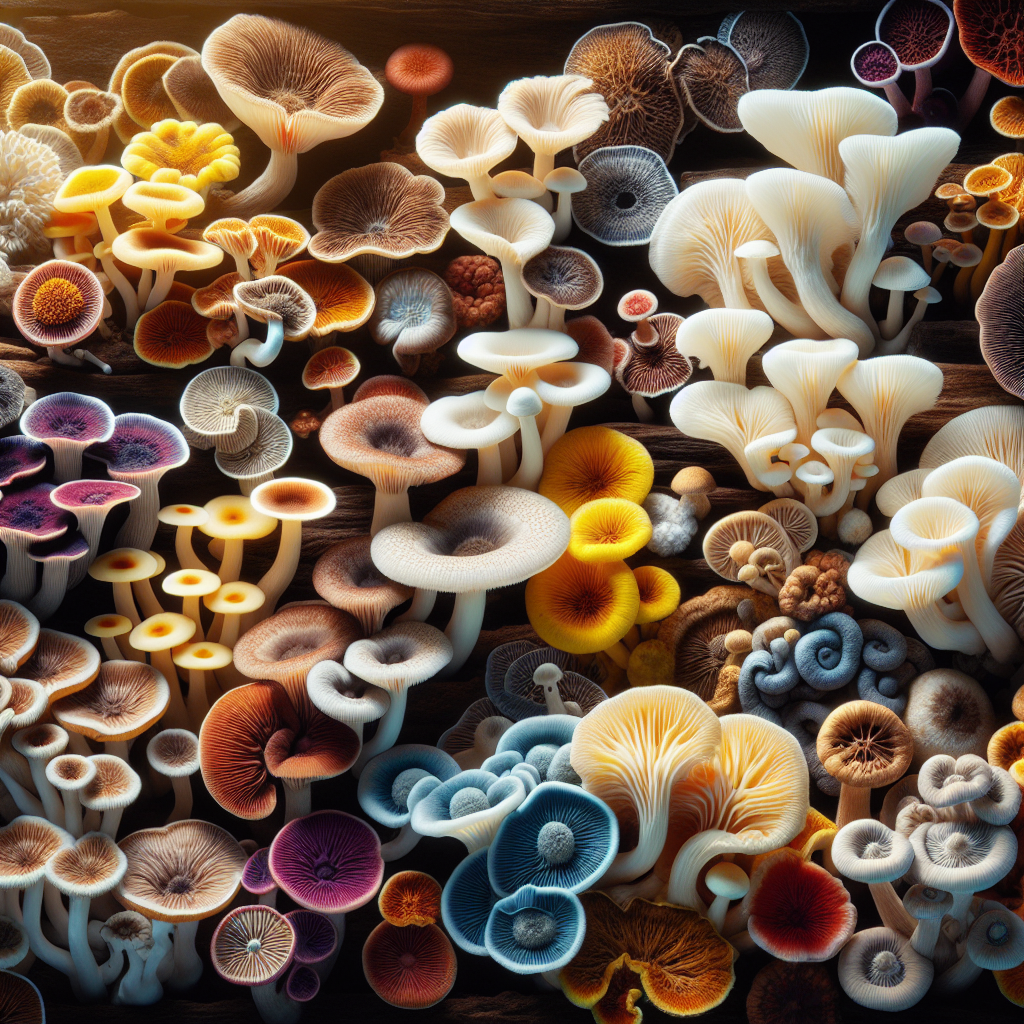In “Unraveling the Mycelium Color Spectrum”, a compelling exploration is undertaken into the fascinating world of fungi and the diverse palette of hues displayed in mycelium, the vegetative part of a fungus. This article takes you through the vibrant color spectrum of mycelium, shedding light on how these hues are not just aesthetically pleasing but also serve various functions essential to the survival of these extraordinary organisms. It provides an in-depth understanding of the science behind the vast array of colors, from the common and recognizable to the strikingly unusual and wondrous.

Understanding Mycelium
Mushrooms are an interesting and diverse group of organisms, often revered for their culinary uses and medicinal properties. However, the hidden counterpart of the mushroom, known as mycelium, plays an equally important role in their function and survival.
Definition of Mycelium
You can imagine mycelium as a complex, thread-like structure forming a vast underground network. It is essentially the vegetative component of a fungus, consisting primarily of a mass of hyphae that develop from fungal spores.
Functions of Mycelium in Mushrooms
Understanding the role of mycelium in mushrooms involves recognizing its basic functions. This includes nutrient absorption, since mycelium spreads outwards from a food source, breaking down the material to absorb nutrients. It also enables communication and transport between different parts of a fungus, which can be critical for its survival and reproduction. Additionally, mycelium fosters growth by creating a structure that mushrooms can grow from.
Mycelium and Ecosystem
mycelium plays a dynamic role in forest ecosystems, aiding in decomposing organic matters, recycling nutrients, and maintaining soil health. It forms symbiotic relationships with plant roots, exchange nutrients for sugars from photosynthesis, which is crucial for the growth and survival of many plant species. Moreover, it acts as a biological filter, decomposing toxic wastes and pollutants and thereby contributing to the overall sustainability and balance of the ecosystem.
Varieties of Mycelium Colors
Diversity in Mycelium Coloration
The diversity in mycelium coloration is fascinating and often unnoticed. While white mycelium is common, other colors such as gold, blue, and several hues in-between, also exist. These colors are not random occurrences but signify certain characteristics and properties of the mycelium and the conditions it resides in.
Determining Factors of Color Variation
The color variation in mycelium results from a wide range of factors including the species of the fungus, the type of substrate it grows on, and the specific environmental conditions it is exposed to. Moreover, the pigments developed during the growth process also greatly contribute to the color variation in mycelium.
Common Mycelium Colors in Wild Mushrooms
You will find mycelium exhibiting a variety of colors in wild mushrooms such as white, yellow, brown, pink, and grey. You may also come across greenish-blue or gold hues in certain species, showcasing the endless diversity in mycelium colors.
The Significance of Color in Mycelium
Color as Indicator of Health
In some instances, the color of mycelium works as an indicator of its health. Healthy mycelium generally appears white or off-white. However, changes to a darker or an unusual color may suggest some form of contamination or poor health.
Color as Indicator of Species
Just as with flowers and insects, color helps in the identification of mycelial species too. Certain species exhibit unique colors, providing a distinguishing feature. For instance, brightly hued mycelium is a characteristic feature of certain exotic mushroom species.
Color and Environmental Impact
The color of mycelium also reflects the environmental impact. Changes in temperature, humidity, light exposure, and accompanying flora and fauna can drastically influence the coloration of mycelium.
Colorful Mycelium and their Species
White Mycelium Species
White mycelium is the most common type, found in several mushroom species such as the white button mushroom (Agaricus bisporus) or the shiitake mushroom (Lentinula edodes). Consistently white mycelium is typically a sign of health, vitality, and devoid of contamination in these varieties.
Gold Mycelium Species
Gold mycelium might not be as conventional as white but is prevalent in certain mushrooms like the golden oyster mushroom (Pleurotus citrinopileatus). Exhibiting a golden-yellow shade of mycelium, this species is loved for its aesthetic appeal and culinary value.
Blue Mycelium Species
Examples of blue mycelium species are lesser-known, but under the right conditions, some mushroom species like the blue oyster mushroom (Pleurotus ostreatus var. columbinus) and the magic mushroom (Psilocybe cubensis) can display bluish tones in their mycelium. Interestingly, this coloration is often associated with the presence of a compound called psilocybin.
White Mycelium: Nature and Characteristics
Benefits of White Mycelium
White mycelium offers a variety of benefits due to its prevalent nature in various mushroom species. White mycelium species can absorb and breakdown toxins, contributing to ecological balance. It also serves as an efficient biological decomposer and recycler, supporting sustainability.
Examples of White Mycelium Mushrooms
White mycelium mushrooms like Agaricus bisporus and Lentinula edodes are particularly well-known to mushroom cultivators and consumers. These mushrooms have made their way into several cuisines around the world due to their rich flavor profile and nutritional benefits.
Cultivation of White Mycelium
Cultivating white mycelium requires careful considerations such as suitable substrate materials, adequate temperature and moisture levels, and absence of contaminants. Achieving an ideal balance in all these factors will facilitate rapid growth and cultivation of white mycelium.
Blue Mycelium: Nature and Characteristics
Understanding Blue Mycelium
Blue mycelium is not frequently seen but still offers a unique spectacle when it occurs. The blue coloration in mycelium can be attributed to the formation of a pigmented compound or the reaction of enzymes under certain environmental conditions.
Blue Mycelium Mushrooms Cases
As mentioned before, instances of blue mycelium can be found in certain mushroom species. For example, Psilocybe cubensis, popularly known as the magic mushroom, exhibits a bluish hue in its mycelium, mainly when handled or bruised.
Cultivating Blue Mycelium
Cultivating blue mycelium requires a nuanced understanding of the species’ specific growth conditions. For instance, certain blue mycelium species might need more rigorous environmental parameters to flourish than others.
Gold Mycelium: Nature and Characteristics
Decoding Gold Mycelium
Gold mycelium presents a fascinating study in the world of fungi. Often associated with specific mushroom species, the golden hues cast an intriguing display of beauty and are indicative of its species and environmental conditions.
Gold Mycelium Mushroom Species
The golden oyster mushroom (Pleurotus citrinopileatus) is an elegant example of the gold mycelium species. Cultivated widely across parts of Asia, both for commercial and culinary purposes, the golden oyster mushroom’s mycelium displays an impressive gold-coloration.
Growing Gold Mycelium
Growing gold mycelium calls for a keen observation of the specific temperature, humidity, and light requirements, while also ensuring that the substrate material is appropriate for the particular mushroom species. Despite being a challenging process, the results are certainly rewarding, particularly for mycology enthusiasts.
Exploring Mycelium Pigmentation
Mycelium Pigmentation Process
The pigmentation process in mycelium is intriguing and multifaceted. It may involve the production of pigmented compounds or the reaction of enzymes in response to environmental stimuli. Through this process, mycelium can exhibit a range of colors.
Role of Enzymes in Color Formation
Enzymes can sometimes play a critical role in the formation of mycelium color. They react to environmental changes and cause biochemical reactions that result in the development of certain pigments, hence contributing to the color change.
Influence of Environmental Factors on Pigmentation
Several environmental factors contribute to mycelium pigmentation. These include variations in light exposure, fluctuations in temperature and humidity, and changes in the composition of the substrate materials.
Mycelium Colors: An Indicator of Environmental Conditions
Impact of Soil Type on Mycelium Color
Soil, or substrate, as it is often referred to in mycology, significantly impacts mycelium color. It influences the availability and type of nutrients being absorbed by the mycelium, which in turn, can affect coloration.
Effect of Temperature and Humidity on Mycelium Color
Temperature and humidity also greatly influence the mycelium color. Certain species may produce differently colored mycelium under varying temperature and humidity levels reflecting their physiological response to these environmental changes.
Correlation between Light and Mycelium Color
Light exposure can have a profound effect on mycelium pigmentation. In some species, exposure to light may trigger the production of pigmented compounds, leading to a shift in mycelium color.
Future Research Possibilities in Mycelium Color Study
Mycelium Color Biochemical Analysis
Understanding the biochemical processes leading to the myriad of mycelium colors presents an attractive area for future research. These studies could unlock the diverse reactions within mycelium contributing to its vivid coloration.
Possible Use of Mycelium Colors in Mushroom Farming
The potential of using mycelium colors to develop more productive and efficient farming strategies appears promising. By understanding which colors indicate healthy and robust mycelium, farmers may be able to optimize their fungi crops better.
Gaps in Current Understanding and Opportunities for Future Research
Despite the discoveries made in mycelium color studies, certain gaps continue to exist. This presents exciting opportunities to dive deeper and uncover more fascinating aspects of this unique and colorful world. The study of mycelium coloration not only contributes to our understanding of fungal biology but also the intricate relationship fungi sustain with the environment.
